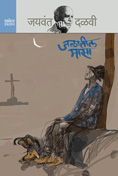"Antisocial network" by Piyush Jha. This book is published by Rupa Publications in 2014 and has 200 pages.
Inspector Virkar returns with another murder mystery. This time it's a series of murders with a different body part missing from each victim. As it turns out there is an outfit who call themselves Antisocial network. Virkar takes help of a beautiful psychology professor and a young hacker to solve the case.
Who is the murderer? Who is the mastermind? What is Antisocial network? Why the murders? Can Inspector Virkar find them?
Over the three books of Piyush Jha, a pattern has emerged. Inspector Virkar fights a lone battle. Can't tolerate injustice to women. Gets little or no support from superiors. Spends his own money to solve cases. Continues investigation on his own when department wants him to close the case that is deemed solved. Gets external help. Rides a bullet. Travels on the boat called 'Koli Queen' for a night with his favourite dish Jhinga Koliwada and Godfather beer to clear his thoughts. Beds a beautiful lady.
This book uses the background of cyber crime, blackmail, hacking and social networking. But really speaking it has nothing new to offer. The book does not demonstrate the expected evolution of the writer.
After the mastermind behind the murders is revealed, the reason given for the functioning of Antisocial network is also unconvincing, inadequate and unsatisfactory. The story drifts in the general direction of conclusion without a clear cut path or purpose. That's why it appears loosely knit.
The end of this book and the culprit was very similar to Piyush's two previous Virkar stories viz. Injectionwala and Compass box killer. This repetition of idea is frustrating and intriguing. Has the author run out of good ideas? He should have offered something new.
Give it a miss.








